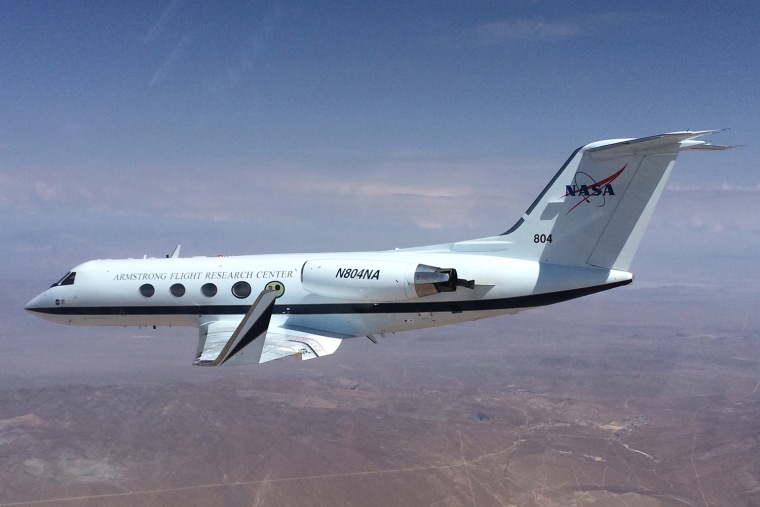Imagine an airplane that can change the shape of its wings or function as a giant flying battery. NASA wants to know if those ideas are pure fantasies or the future of flight — and it's willing to spend the money to find out.
NASA's Convergent Aeronautics Solutions (CAS) project recently picked six out of 17 proposals submitted by its own employees. None of them are near completion. In fact, you could say they are pie-in-the-sky ideas, which is kind of the point.
"I call them wild and crazy ideas, although they're not really that crazy, they just try to answer big questions," Doug Rohn, manager for NASA's Transformative Aeronautics Concepts Program, told NBC News. "What we're trying to do is determine whether they are feasible or not."
Specifically, the project aims to answer two big questions. One is general: How to create planes with "maximum efficiency and minimal environmental impact."
The other poses a specific scenario: How might an aircraft fly someone in a medical emergency from the wilderness of Alaska to the Mayo Clinic in Minnesota without any human intervention? The scenario might seem random, but it's meant to give NASA engineers focus and inspiration, ultimately leading to smarter unmanned aerial vehicles (UAVs).
When NASA announced the project Monday, Rohn compared himself in the press release to an "early stage angel investor" looking for a return of "knowledge and potential solutions to future challenges in aviation." So what are the "wild and crazy" proposals that the agency is pursuing?
Go Electric
NASA really wants an electric engine to replace the traditional, jet fuel-based engines of today. Right now, nothing is efficient and lightweight enough to do that.
The answer could be high voltage, variable frequency drives, which are primarily used in industrial settings to power things like conveyor belts. NASA hopes they are the key to electrical propulsion and the end of costly, dirty jet fuel.
Turn a Plane Into a Big Battery
Of course, electric planes can't simply plug into an outlet during a 17-hour journey across the globe. Instead of waiting around for Elon Musk to design a Tesla airplane, NASA is looking into whether its possible for the body of an airplane to double as a battery.
"That would just make for a more efficient design," Rohn said. "Instead of carrying extra weight, it would be built in."
Build a flying transformer
NASA wants to develop "mission adaptive digital composite aerostructure technologies," or, in plain language, aircraft made out of super-lightweight material that can change shape to adapt to different flight conditions.

It might sound like something from science fiction, but NASA (along with the Air Force and and a Michigan-based company called FlexSys Inc.) has already flown 22 test missions with a plane featuring shape-shifting wings. The new technology is meant to replace wing flaps, which would ideally increase fuel efficiency and decrease the weight of small jets.
Create something as smart as a pilot
Flying drones can already navigate by themselves. What NASA wants are unmanned aerial vehicles that take into account their surroundings — including weather and other aircraft — and change their flight plans "in ways that are as sure and predictable as would be made by a certified human pilot."
Create a Virtual Reality
The last two proposals involve building digital simulations that are so good that they would allow engineers to skip ground-based testing altogether and create a "digital twin" of an airplane that would age like the real thing and help them foresee mechanical problems.
Each project is expected to last from two to 2.5 years, costing anywhere from $1 million to $5 million per year. While it's not a journey to Mars, the CAS project is still a vital part of NASA's mission, Rohn said, pointing out that "the first A in NASA stands for aeronautics."
"We do research in line with our strategic plan — to advance the state of the art," he said. "It's the next generation of technologies for the next generation of vehicles."
